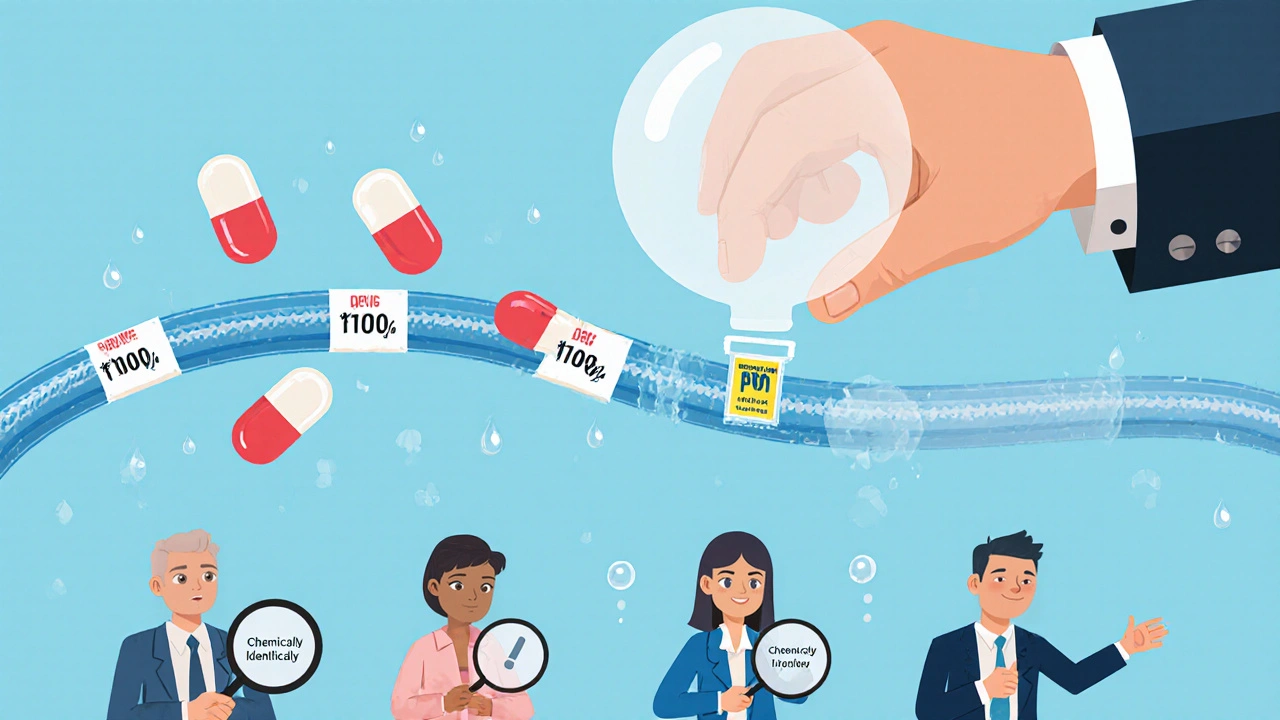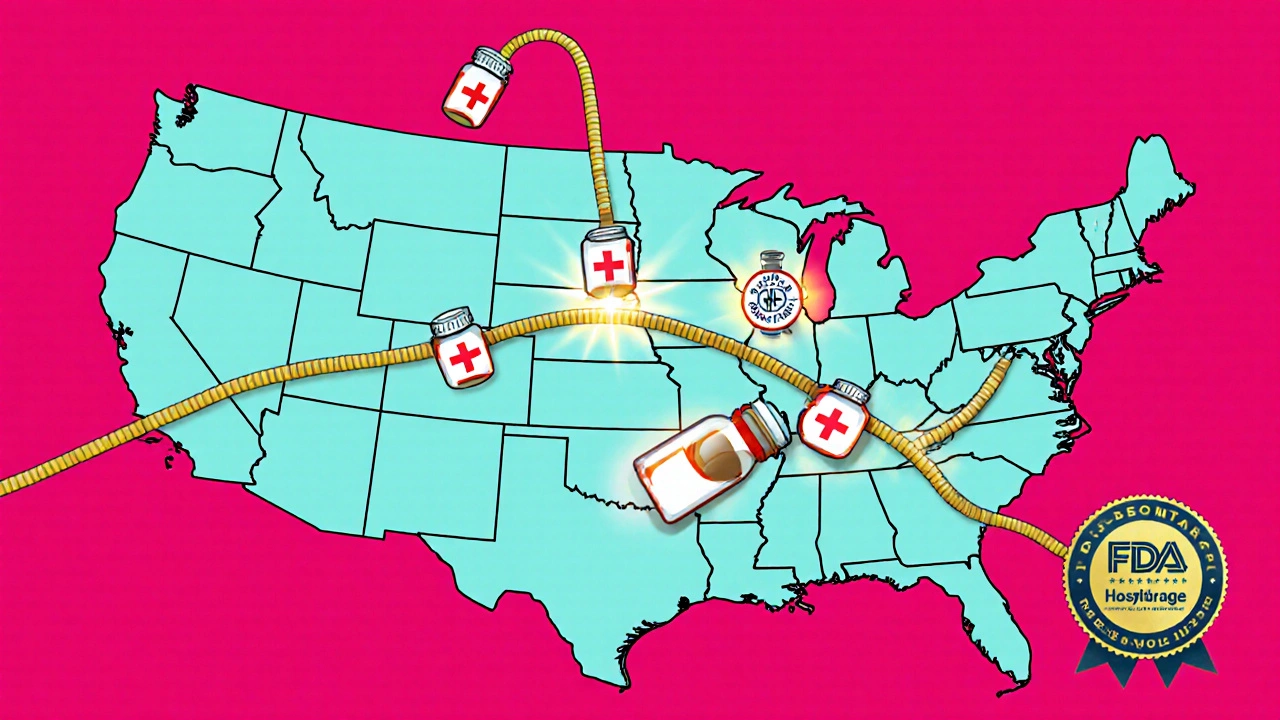When you walk into a pharmacy and pick up a generic version of your prescription, you might assume more competitors mean lower prices. It sounds logical-more companies making the same drug should drive costs down. But in reality, the relationship between the number of generic competitors and price isn’t simple. In some cases, adding more generic makers barely moves the needle. In others, prices crash. And sometimes, the original brand drug actually raises its price. This isn’t a glitch. It’s how the system works.
More Competitors Don’t Always Mean Lower Prices
The FDA says that when a single generic enters the market, brand-name drug prices drop by about 30-39%. With two generics, that jump to 54%. By the time you hit six or more competitors, prices often fall by 95% or more. Sounds great, right? But those numbers come from controlled data-real markets don’t always follow the script.
In Portugal, for example, regulators set strict price caps on statins. Even though six or seven generic versions were approved, prices stayed stubbornly close to the cap. Why? Because the companies knew the cap was the ceiling. They didn’t need to undercut each other. They just matched the cap. This is called mutual forbearance. It’s not collusion. It’s a quiet understanding: if everyone plays by the same rules, no one loses. The system works, but not in the way policymakers hoped.
China’s market shows another twist. Eight quarters after the first generic hit the shelves, 15 out of 27 original drugs still held over 70% of the market. That’s not failure-it’s strategy. Some brand-name companies lowered their prices by just 3%. A few even raised them slightly. Why? Because patients and doctors still trusted the brand. If you’ve been taking Lipitor for years, switching to a generic labeled “atorvastatin” might feel risky-even if it’s chemically identical. That perception gives brands leverage.
Complex Drugs Block the Competition
Not all drugs are created equal. A simple pill like metformin? Easy to copy. A complex injectable, a long-acting inhaler, or a topical gel with layered particles? That’s a different story.
Generic makers don’t just need to match the active ingredient. They have to prove they match every single quality attribute-how the drug dissolves, how it’s absorbed, even how the particles behave in the body. That’s called Q1, Q2, Q3 testing. It’s expensive. It takes years. And only a handful of big generic companies can afford it.
As a result, even when a drug has dozens of approved generics, only two or three are actually on the shelves. The rest sit in regulatory limbo. This creates a hidden monopoly. The big players control supply, and prices stay higher than they should. This is the complexity advantage. It’s not about patents. It’s about technical barriers that keep small companies out.
Who Really Controls the Market?
Most people think pharmacies set prices. They don’t. Pharmacy Benefit Managers (PBMs) do.
By 2017, PBMs were handling 90% of all drug purchases in the U.S. They negotiate rebates, manage formularies, and decide which drugs get covered. And they don’t care if a generic is cheaper-they care about the net price after rebates. So if a brand offers a 40% rebate to a PBM, it can still win over a generic that’s 50% cheaper but offers no rebate.
This breaks the link between competition and price. Even with five generics on the market, if the PBM favors the brand, the brand stays on the shelf. Patients never see the difference. And the brand doesn’t need to drop its price.
Then there’s the authorized generic. That’s when the brand company itself releases a generic version during its 180-day exclusivity window. It’s a legal way to undercut other generics. If the brand owns the authorized generic, prices drop 8-12% at the wholesale level. But if someone else owns it? The brand raises its price by 22% to make up for lost sales. It’s a game of chess-and the brand always has the first move.

Supply Chain Stability Is the Hidden Benefit
Here’s something you won’t hear in ads: having multiple generic makers isn’t just about price. It’s about survival.
Between 2018 and 2022, drugs with three or more generic manufacturers had 67% fewer shortages than those with just one. Why? Because if one factory has a quality issue, another can pick up the slack. If one company goes bankrupt, others keep producing.
That’s not theoretical. In 2020, a single supplier failure caused a nationwide shortage of a common antibiotic. It took months to fix. If there had been three other manufacturers with FDA approval, it wouldn’t have happened.
So even if prices don’t drop as much as expected, having multiple competitors keeps the lights on. That’s a quiet win for patients.
Patents, Pay-for-Delay, and Legal Barriers
Patents used to be the main barrier. Now, it’s patent thickets.
Brand companies file dozens of patents-not just on the drug, but on the pill coating, the manufacturing process, the packaging, even the way it’s taken. One drug had over 70 patents. Generic makers have to challenge each one. It costs millions. And sometimes, the brand offers a deal: “Don’t enter the market, and we’ll pay you.”
These are called “pay-for-delay” agreements. The FTC has cracked down, but they still happen. In 2023, a study found that 1 in 5 generic entries was delayed by these deals. That means patients wait longer for lower prices. And the brand keeps its monopoly.
The Inflation Reduction Act Is Changing the Game
Starting in 2026, Medicare will start negotiating prices for 10 high-cost drugs each year. The goal is to lower costs. But it might backfire for generics.
If Medicare sets a “Maximum Fair Price” for a brand drug, generic makers may decide it’s not worth entering the market. Why spend $10 million to develop a generic if the final price is capped at $5 a pill? The profit margin disappears.
That could mean fewer generics. Fewer competitors. Less supply. More shortages. The very system that saved $3 trillion over 40 years might start to unravel.

Therapeutic Class Matters More Than You Think
Competition looks different depending on the drug.
For chronic conditions like high blood pressure or diabetes, patients take the same drug for years. Generics thrive here. Price sensitivity is high. Switching is easy.
But for cancer drugs? It’s different. Imatinib and dasatinib showed huge price gaps between brand and generic in China-even after years of competition. Why? Because doctors and patients are terrified of switching. A small difference in absorption could mean treatment failure. That fear keeps brand prices high.
And for biologics-complex drugs made from living cells-the rules don’t even apply yet. The FDA says a 85% price drop for small-molecule generics won’t work here. These drugs cost $100 million to develop. Generics (called biosimilars) cost $100 million too. So prices don’t drop nearly as much. And competition is still rare.
What Does This Mean for You?
If you’re on a generic drug, don’t assume lower price = more competition. Check your formulary. Ask your pharmacist: Is this the only version available? Are there others approved but not stocked? Is your insurance pushing you toward a specific brand?
If you’re a patient on a high-cost drug, don’t assume generics will automatically save you money. The system is designed to protect profits-not always patients.
But there’s hope. More competition, when it happens, means fewer shortages. Better supply. More choices. The real win isn’t always the price tag. It’s knowing your medicine won’t disappear next month.
What’s Next?
The next wave of competition won’t be about pills. It’ll be about biosimilars, digital dosing tools, and international pricing models. The U.S. is still stuck in a 1984 framework. Europe uses centralized price negotiations. Canada uses reference pricing. Australia has strict cost-effectiveness reviews.
One thing’s clear: the number of generic competitors is just one piece of a very complex puzzle. Regulation, corporate strategy, patient behavior, and supply chain logistics all matter. Until policymakers understand that, we’ll keep seeing the same patterns-low prices in some places, high prices in others, and shortages everywhere in between.


Post A Comment